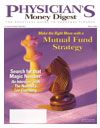Publication
Article
Physician's Money Digest
THUMBS DOWN: Looming Bust Hits Vulnerable Loans
BusinessWeek
The recent drop-off in new constructioncoupled with the NationalAssociation of Home Builders' gloomyassessment of market conditions havespurred the ongoing debate that theend of the housing boom may finallybe near. Amid talks of what all of thismeans to the economy, reports that one area in particular is ofworry to economists: the subprimemortgage market. Aimed at borrowerswho do not have the income or creditto qualify for a conventional loan, subprimemortgage originations grew sevenfoldbetween 2000 and 2005. Theaverage loan is nearly $200,000, andthese loans account for 9% of all mortgagedebt. Moreover, 82% of subprimeloans are adjustable-rate mortgages,whose rates change in response to theprime rate and can rise quicker thanfixed-rate mortgages. According to thearticle, JP Morgan Chase estimates thatif the Federal Reserve raises its rate to5%, then fixed-rate mortgages will riseto 6.75%. The initial rate on a subprimeloan would jump between 9.5% and10%, which translates into an extra$250 per month for existing borrowers.Experts predict that the vulnerablenature of subprime loans will contributeto the slump in housing sales. California,which consists of 30% of thistype of lending, will be hit the hardest.
